PHEA INVITE: LowiePete's Detailing Meet, Saturday 23rd Sept.
Discussion
How the Detailing Day Went - Part 2
Hello Folks,
Again my apologies for all the codes. [color="#000077"]
[COLOR="Blue"]The Chemical Clean contd...[/COLOR]
With the car's paint now clean and clear of any sharps, it can be time to bring
the big-guns out with the aid of polishing machines. Because we're entirely
relying on the chemical reaction twixt pad and paint this is a process where
little or no pressure above the weight of the machine is needed.
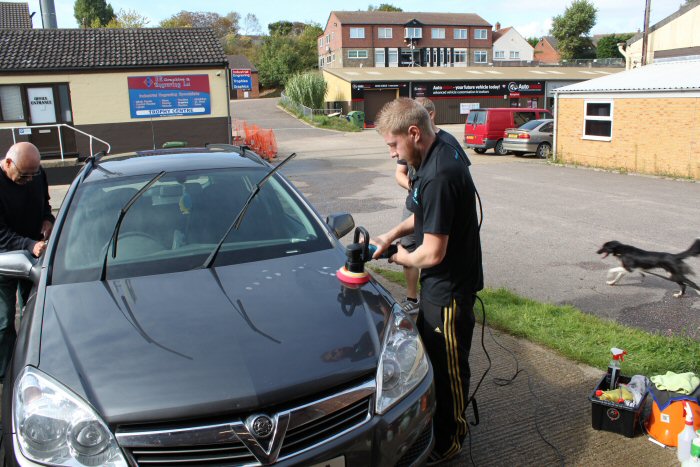
[COLOR="DarkRed"]Here, Jordan is preparing to use the SP Paint Cleaner by machine[/COLOR]
Meanwhile, on the by-hand side, I'm watching Dave exhaust himself by going
round in circles with the pad. Whenever you have a firm pad in your hand
you can almost instinctively start pressing too hard. I've watched, often with
astonishment, how some people treat a chemical cleaner almost as if it was
grinding paste! On this day, you were dared to break a sweat!
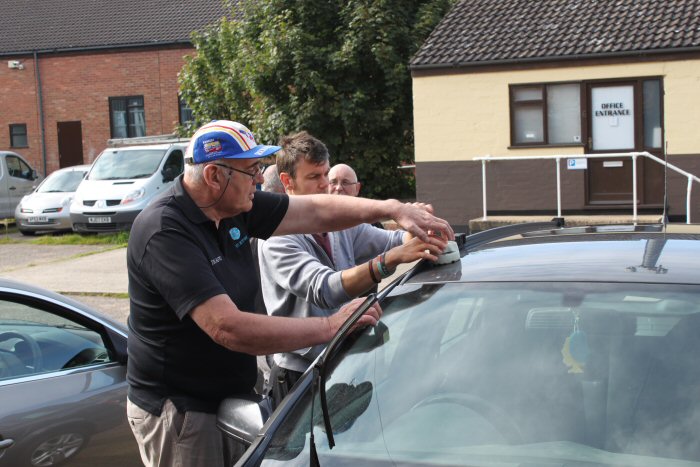
[COLOR="DarkRed"]A quick intervention to demo an alternative by "working along and across in a box"[/COLOR]
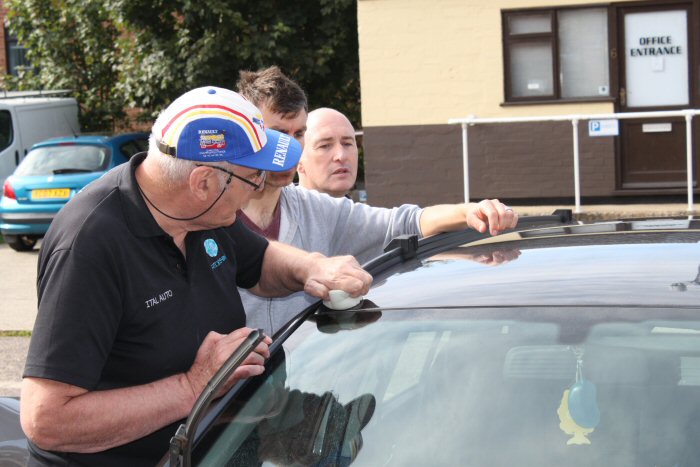
[COLOR="DarkRed"]By working in straight lines you can define a working area upon which you can concentrate[/COLOR]
What the photo doesn't show is that I have worked both across and along the
work area. Just like with the clay cloth you need to be keeping a watch on the
feedback you're getting from the surface, especially if the pad's lubrication is
diminishing. You'll also need to keep an eye on what muck is being removed
and absorbed into the pad, giving it a good rinse-out in fairly warm water
whenever needed.
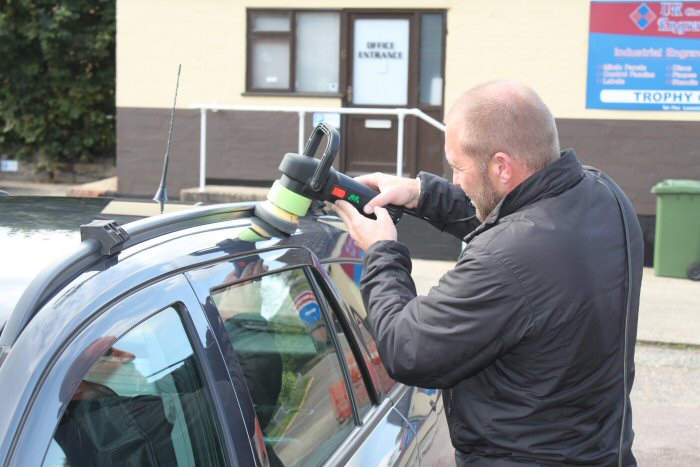
[COLOR="DarkRed"]Meanwhile, Neil is on the machine side, demonstrating good safety practice with the electric cord[/COLOR]
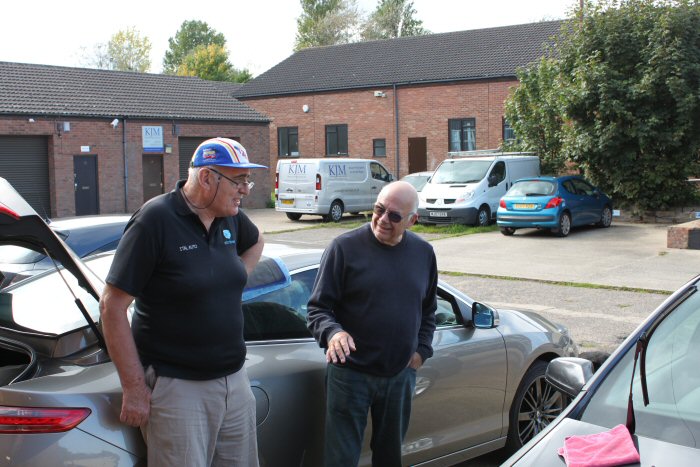
[COLOR="darkred"]A regular conversation at meets, when Jack talks to me about the items he's previously bought[/COLOR]
Another eye-opener at these meets is the absence of emphasis on loads of
kit and expensive "potions for all occasions". With ONR only being available
at a few outlets, its versatility makes up for its single postage cost. I now buy
only the American gallon bottles, knowing that none of it will end up on a
shelf, unused. Probably the remark of the day to me was an intent on buying
a "bunch of MF cloths".
My reply to Jack was that what he'd already spent would probably get absorbed
sooner or later; it's just that some of it might last a lot longer than he'd
anticipated, especially his tin of wax.
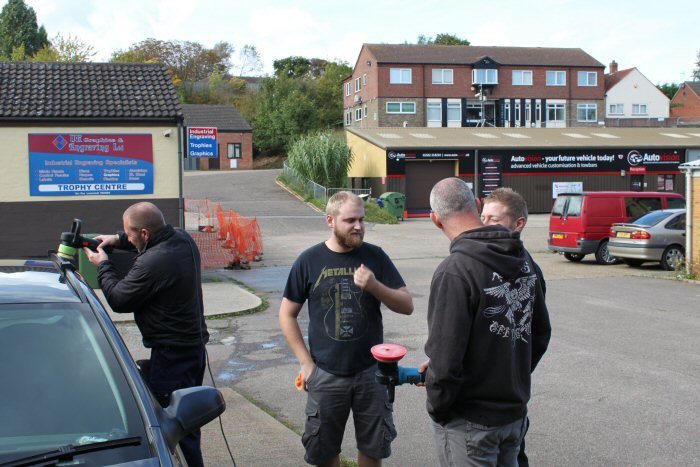
[COLOR="DarkRed"]It's always pleasing when you have an audience that takes such an interest in what they're being shown[/COLOR]
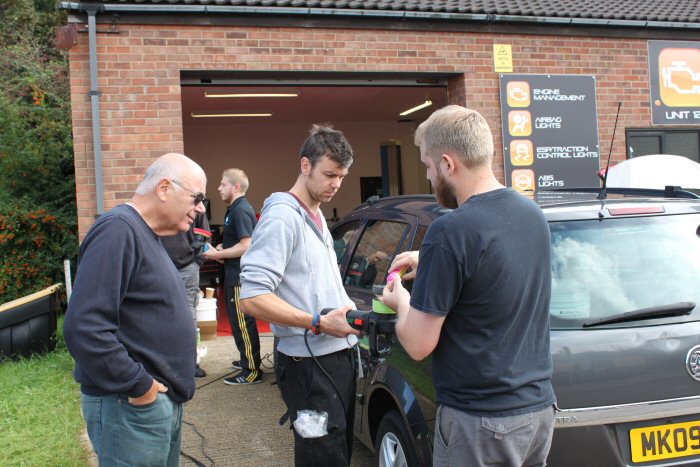
[COLOR="DarkRed"]Jack looks on as Darren shows Dave how much paint cleanser to put on the pad[/COLOR]
[COLOR="Blue"]The Glare System Demo[/COLOR]
Having got the paint into quite a reasonable condition, considering things like
the time available, we can now begin to discuss paint protection and ways to
keep it looking good through the winter months. So, now we hand over to
Darren to show us a complete alternative to either the use of polymers or
ceramic protection.
The Glare System stands entirely alone in that ordinary waxes and sealants
will not properly bond with it. That isn't entirely a bad thing because if its
properly applied, it'll mask the swirls and keep them that way for years. As
ever, it comes down to your washing techniques, especially drying, that will
determine its longevity.
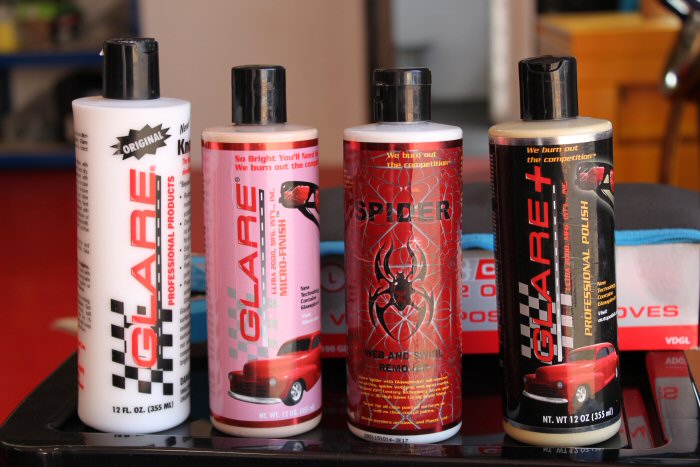
[COLOR="darkred"]The Glare System components[/COLOR]
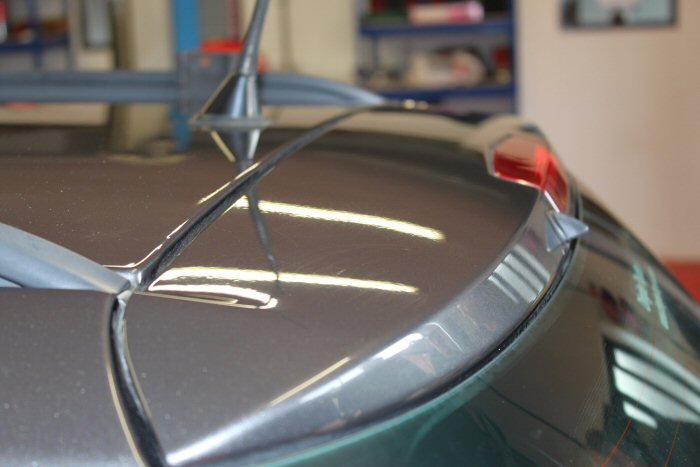
[COLOR="DarkRed"]The spoiler paint condition at the start[/COLOR]
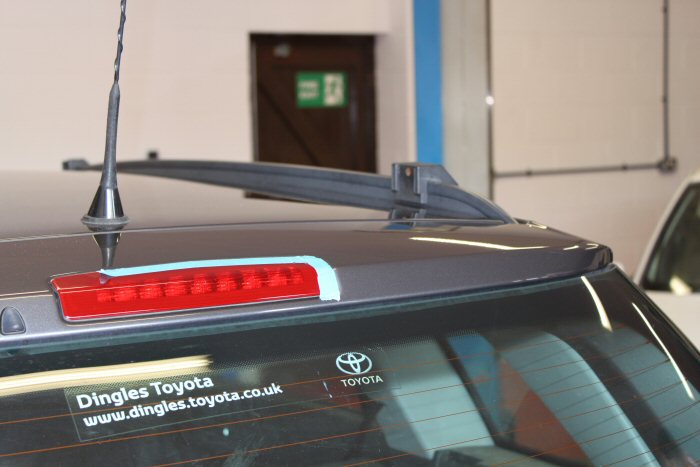
[COLOR="DarkRed"]The protective tape in position[/COLOR]
One of the biggest hurdles at a meet is to manage the time because it can
just run away with you. You'll see that Darren has been able to only do half
of the rear spoiler as his demo. The reason being that part of the success of
Glare application is heat. That can take a while to generate and you need to
be careful of not getting it too hot!
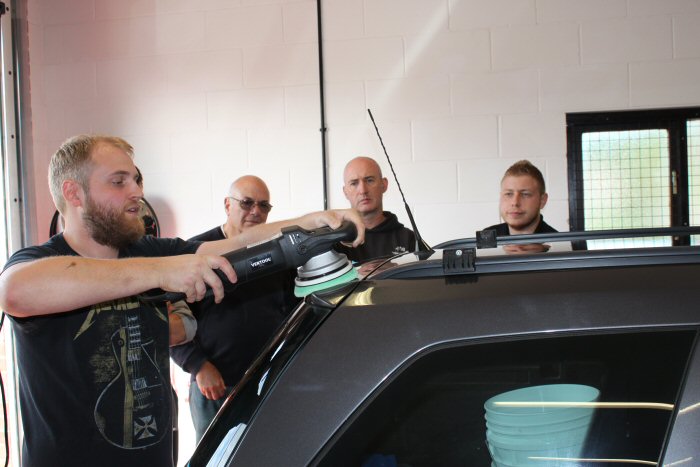
[COLOR="DarkRed"]The maestro working patiently[/COLOR]
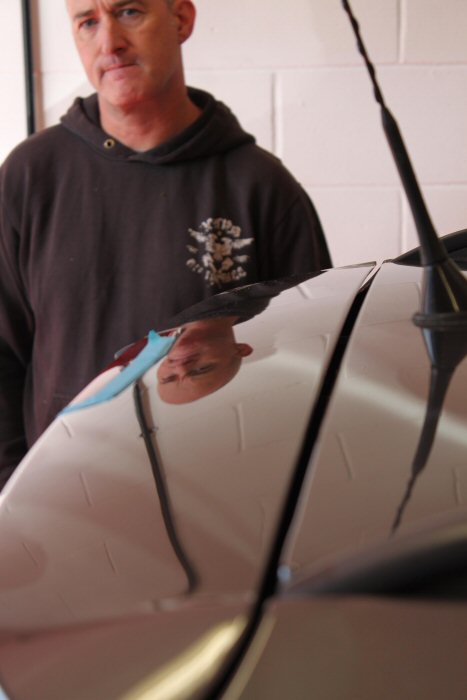
[COLOR="DarkRed"]The finish is very presentable![/COLOR]
[COLOR="Blue"]Cut Versus Fill - The Choices Discussed[/COLOR]
Having used a system that uses a combination of cut and fill, we turned our
attention to using commonly used potions, discussing all the pros and cons,
especially as modern technology from such as CarPro with their "Essence"
changes the game completely.
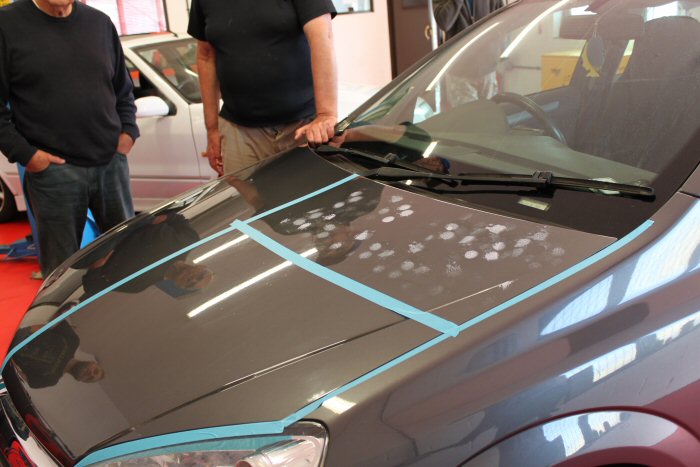
[COLOR="DarkRed"]The bonnet taped-up into areas for comparative potion and technique testing. The smallest
area would be where Jordan used a mild cutting compound to demo the "cut" options[/COLOR]
Then came the testing of CP's Essence, with some acclaim.
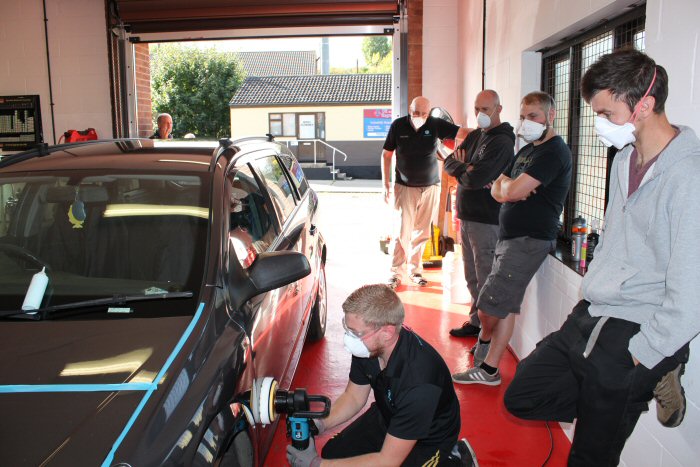
[COLOR="DarkRed"]With nanofine particles of both potion and probably dirt of some age, no chances
are taken over breathing anything that you cannot even see![/COLOR]
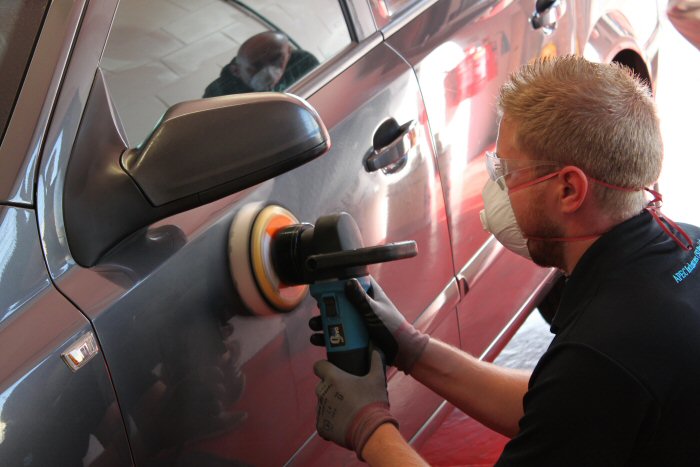
[COLOR="DarkRed"]While there's no denying the quality of work that can be achieved by machine, the detachment
caused by all the protective wear presents a real down side[/COLOR]
As someone with hands that don't behave as intended, this is probably going
to sound like sour-grapes. Some of the pretty fantastic potions out there now
demand quite a bit of thought about working safely. That applies equally by
hand or by machine. The latter now almost needing you to dress-up like
Darth Vader
While I can pretty accurately describe how the surface should feel when
working by hand, or speak about the feedback you should be receiving at any
given point, there seems to be an absence of this when working with machines.
Perhaps Darren and Jordan can expand on this for us. Obviously, I'd love to
be handling a machine, but I'm not sure how I'd cope with the detachment.
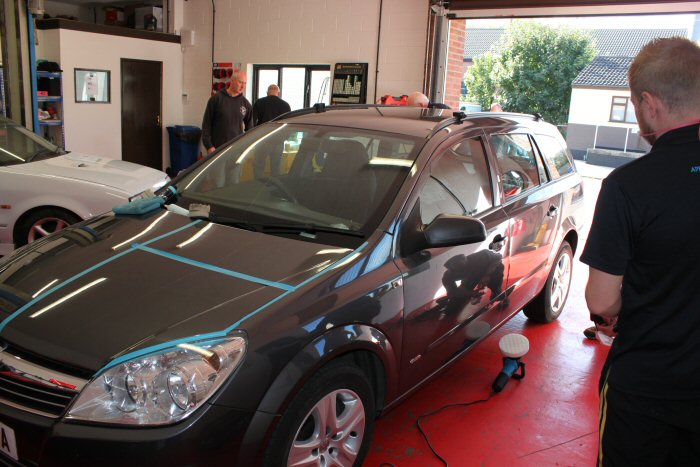
[COLOR="DarkRed"]The passenger door finish presenting some good reflections[/COLOR]
Speaking of restorative potions, one of my personal favourites is ADS Blue
Lotion, (ABL) which is sadly no longer available in the UK, though that might
change. With it being silane based, as opposed to nano-fine glass, it is much
safer to use and one of its properties is that it can be an LSP in its own right.
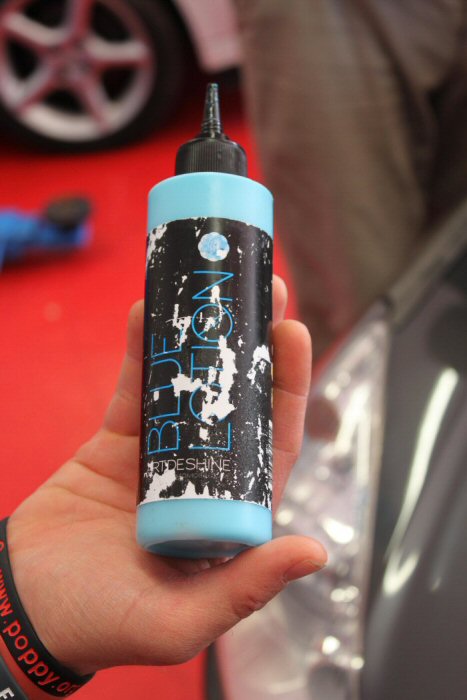
[COLOR="DarkRed"]A much used Blue Lotion bottle[/COLOR]
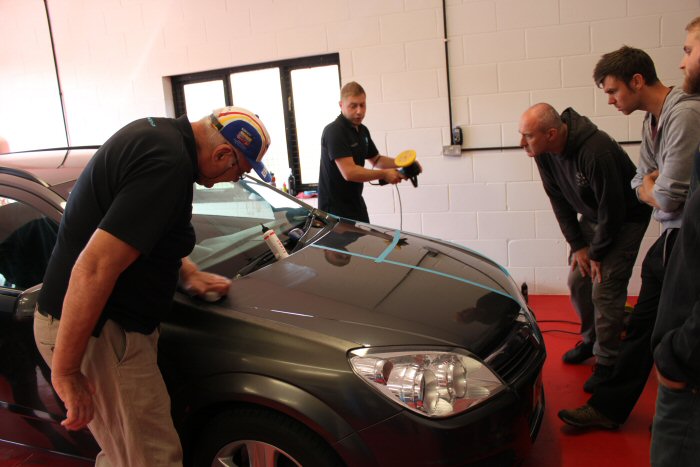
[COLOR="DarkRed"]Causing a bit of a stir in finishes[/COLOR]
On the bonnet there was the patch that Jordan cut back. Below it I had
applied some ABL and closest to me some CarPro Fixer was used, by hand,
to see if any more dirt could be removed.
[COLOR="Blue"]A Change in Attitude[/COLOR]
What these modern potions bring is a vast change in attitude over what
has been known as "filler heavy" glazes. This new technology brings with
it a longevity not known hitherto. Under a protective wax coating CP's
Essence will essentially last up to 12 months, while un-topped ABL will
easily cope with 4 months of British weather.
With the number of cut-backs you can do to your paint being finite and
the way that modern restorative products work, the technology that's
now available is very exciting. Filler heavy will no longer be dirty words,
especially as CarPro's Essence Plus is leading the way in repairing glass
or ceramic coatings.
See Part 3 for the Finale...
[/color]
All Photographs used with permission;
Copyright © 2017 Neil Sheppard All Rights Reserved
Regards,
Steve
Hello Folks,
Again my apologies for all the codes. [color="#000077"]
[COLOR="Blue"]The Chemical Clean contd...[/COLOR]
With the car's paint now clean and clear of any sharps, it can be time to bring
the big-guns out with the aid of polishing machines. Because we're entirely
relying on the chemical reaction twixt pad and paint this is a process where
little or no pressure above the weight of the machine is needed.

[COLOR="DarkRed"]Here, Jordan is preparing to use the SP Paint Cleaner by machine[/COLOR]
Meanwhile, on the by-hand side, I'm watching Dave exhaust himself by going
round in circles with the pad. Whenever you have a firm pad in your hand
you can almost instinctively start pressing too hard. I've watched, often with
astonishment, how some people treat a chemical cleaner almost as if it was
grinding paste! On this day, you were dared to break a sweat!

[COLOR="DarkRed"]A quick intervention to demo an alternative by "working along and across in a box"[/COLOR]

[COLOR="DarkRed"]By working in straight lines you can define a working area upon which you can concentrate[/COLOR]
What the photo doesn't show is that I have worked both across and along the
work area. Just like with the clay cloth you need to be keeping a watch on the
feedback you're getting from the surface, especially if the pad's lubrication is
diminishing. You'll also need to keep an eye on what muck is being removed
and absorbed into the pad, giving it a good rinse-out in fairly warm water
whenever needed.

[COLOR="DarkRed"]Meanwhile, Neil is on the machine side, demonstrating good safety practice with the electric cord[/COLOR]

[COLOR="darkred"]A regular conversation at meets, when Jack talks to me about the items he's previously bought[/COLOR]
Another eye-opener at these meets is the absence of emphasis on loads of
kit and expensive "potions for all occasions". With ONR only being available
at a few outlets, its versatility makes up for its single postage cost. I now buy
only the American gallon bottles, knowing that none of it will end up on a
shelf, unused. Probably the remark of the day to me was an intent on buying
a "bunch of MF cloths".
My reply to Jack was that what he'd already spent would probably get absorbed
sooner or later; it's just that some of it might last a lot longer than he'd
anticipated, especially his tin of wax.

[COLOR="DarkRed"]It's always pleasing when you have an audience that takes such an interest in what they're being shown[/COLOR]

[COLOR="DarkRed"]Jack looks on as Darren shows Dave how much paint cleanser to put on the pad[/COLOR]
[COLOR="Blue"]The Glare System Demo[/COLOR]
Having got the paint into quite a reasonable condition, considering things like
the time available, we can now begin to discuss paint protection and ways to
keep it looking good through the winter months. So, now we hand over to
Darren to show us a complete alternative to either the use of polymers or
ceramic protection.
The Glare System stands entirely alone in that ordinary waxes and sealants
will not properly bond with it. That isn't entirely a bad thing because if its
properly applied, it'll mask the swirls and keep them that way for years. As
ever, it comes down to your washing techniques, especially drying, that will
determine its longevity.

[COLOR="darkred"]The Glare System components[/COLOR]

[COLOR="DarkRed"]The spoiler paint condition at the start[/COLOR]

[COLOR="DarkRed"]The protective tape in position[/COLOR]
One of the biggest hurdles at a meet is to manage the time because it can
just run away with you. You'll see that Darren has been able to only do half
of the rear spoiler as his demo. The reason being that part of the success of
Glare application is heat. That can take a while to generate and you need to
be careful of not getting it too hot!

[COLOR="DarkRed"]The maestro working patiently[/COLOR]

[COLOR="DarkRed"]The finish is very presentable![/COLOR]
[COLOR="Blue"]Cut Versus Fill - The Choices Discussed[/COLOR]
Having used a system that uses a combination of cut and fill, we turned our
attention to using commonly used potions, discussing all the pros and cons,
especially as modern technology from such as CarPro with their "Essence"
changes the game completely.

[COLOR="DarkRed"]The bonnet taped-up into areas for comparative potion and technique testing. The smallest
area would be where Jordan used a mild cutting compound to demo the "cut" options[/COLOR]
Then came the testing of CP's Essence, with some acclaim.

[COLOR="DarkRed"]With nanofine particles of both potion and probably dirt of some age, no chances
are taken over breathing anything that you cannot even see![/COLOR]

[COLOR="DarkRed"]While there's no denying the quality of work that can be achieved by machine, the detachment
caused by all the protective wear presents a real down side[/COLOR]
As someone with hands that don't behave as intended, this is probably going
to sound like sour-grapes. Some of the pretty fantastic potions out there now
demand quite a bit of thought about working safely. That applies equally by
hand or by machine. The latter now almost needing you to dress-up like
Darth Vader

While I can pretty accurately describe how the surface should feel when
working by hand, or speak about the feedback you should be receiving at any
given point, there seems to be an absence of this when working with machines.
Perhaps Darren and Jordan can expand on this for us. Obviously, I'd love to
be handling a machine, but I'm not sure how I'd cope with the detachment.

[COLOR="DarkRed"]The passenger door finish presenting some good reflections[/COLOR]
Speaking of restorative potions, one of my personal favourites is ADS Blue
Lotion, (ABL) which is sadly no longer available in the UK, though that might
change. With it being silane based, as opposed to nano-fine glass, it is much
safer to use and one of its properties is that it can be an LSP in its own right.

[COLOR="DarkRed"]A much used Blue Lotion bottle[/COLOR]

[COLOR="DarkRed"]Causing a bit of a stir in finishes[/COLOR]
On the bonnet there was the patch that Jordan cut back. Below it I had
applied some ABL and closest to me some CarPro Fixer was used, by hand,
to see if any more dirt could be removed.
[COLOR="Blue"]A Change in Attitude[/COLOR]
What these modern potions bring is a vast change in attitude over what
has been known as "filler heavy" glazes. This new technology brings with
it a longevity not known hitherto. Under a protective wax coating CP's
Essence will essentially last up to 12 months, while un-topped ABL will
easily cope with 4 months of British weather.
With the number of cut-backs you can do to your paint being finite and
the way that modern restorative products work, the technology that's
now available is very exciting. Filler heavy will no longer be dirty words,
especially as CarPro's Essence Plus is leading the way in repairing glass
or ceramic coatings.
See Part 3 for the Finale...
[/color]
All Photographs used with permission;
Copyright © 2017 Neil Sheppard All Rights Reserved
Regards,
Steve
Edited by LowiePete on Friday 12th January 06:42
Edited by LowiePete on Monday 25th March 17:51
Gassing Station | East Anglia | Top of Page | What's New | My Stuff


